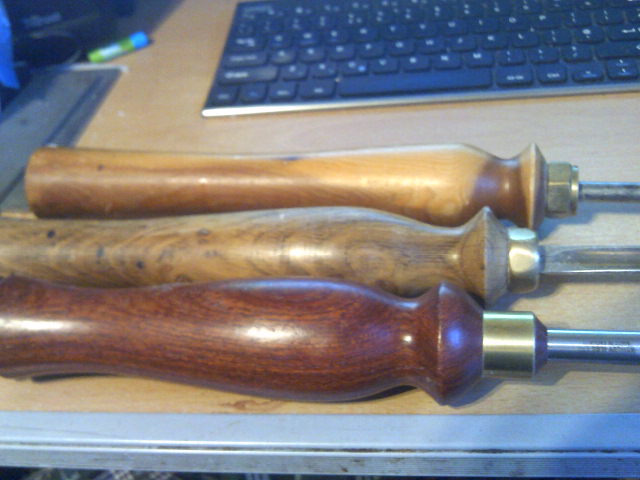It's probably free machining leaded brass (360). that has the grainy kind of easy to cut and mill texture that you're talking about.
I think at some point, people gave up on those parts of chisels. I've got a nice set of wooden handled footprint chisels, but they have hoops that look like a hose clamp, and one is used as a ferrule. Two out of four of those broke at some point.
I'm sure that once the tools go from the UK to here (where dry winters cause shrinkage and less subsequent springback) their ferrules will fall off, too. AI chisels and old planes generally shrink here and there are issues with bits coming off (it's not brand specific to anything, though - old plow planes that got along fine in the UK will show up over here and have boxwood nuts get tight and split fairly often).
The missed detail here is that you found usable tools that you needed to do nothing but replace the ferrule on for 50p and the issue is the ferrule? The new boutique tools made in the states here have taught people that they don't need to learn how to do anything in regard to tool making, but you get to a ceiling in making anything really quickly if you can't make or modify tools.
I think at some point, people gave up on those parts of chisels. I've got a nice set of wooden handled footprint chisels, but they have hoops that look like a hose clamp, and one is used as a ferrule. Two out of four of those broke at some point.
I'm sure that once the tools go from the UK to here (where dry winters cause shrinkage and less subsequent springback) their ferrules will fall off, too. AI chisels and old planes generally shrink here and there are issues with bits coming off (it's not brand specific to anything, though - old plow planes that got along fine in the UK will show up over here and have boxwood nuts get tight and split fairly often).
The missed detail here is that you found usable tools that you needed to do nothing but replace the ferrule on for 50p and the issue is the ferrule? The new boutique tools made in the states here have taught people that they don't need to learn how to do anything in regard to tool making, but you get to a ceiling in making anything really quickly if you can't make or modify tools.



































